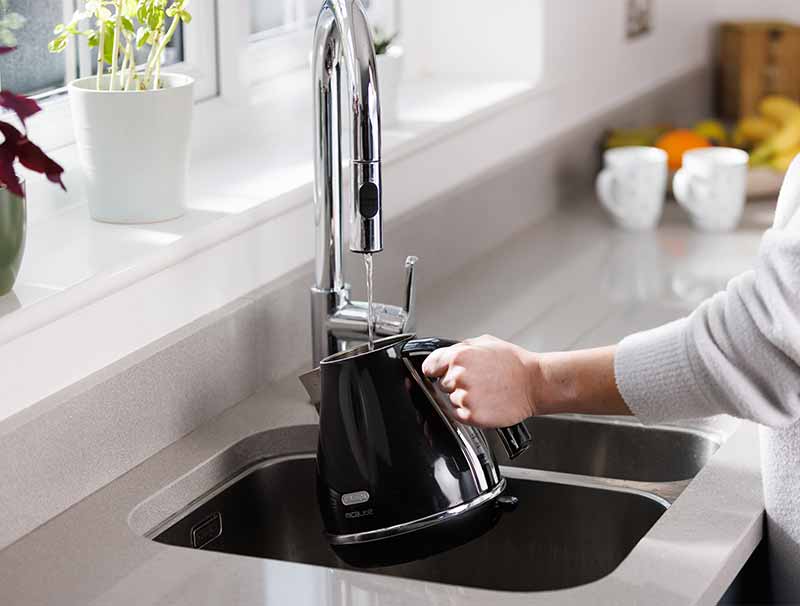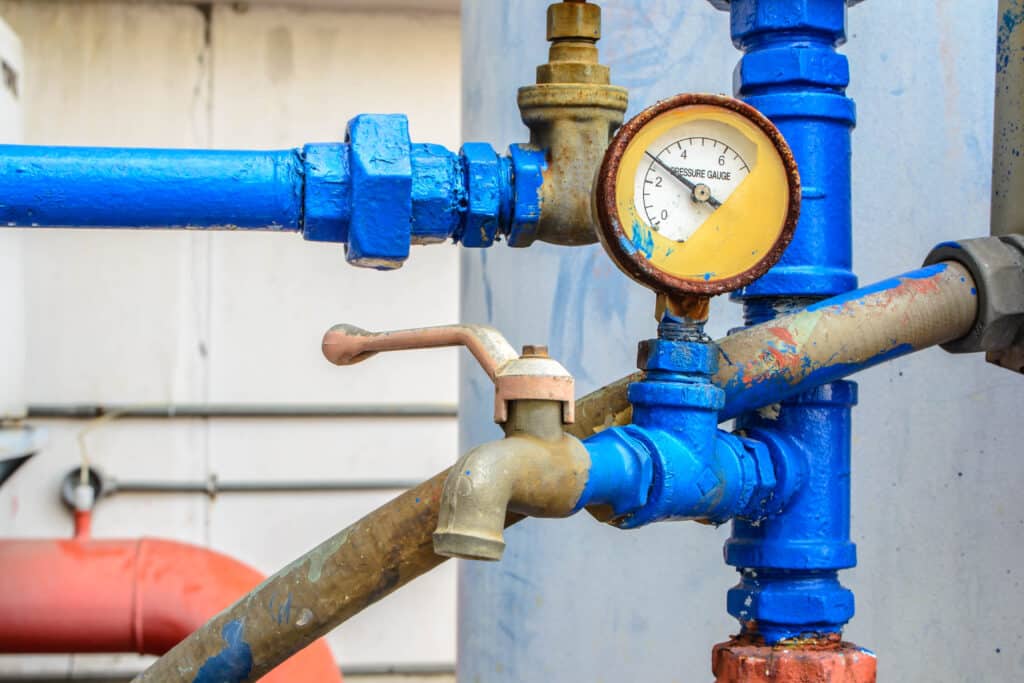Simple Steps for Dealing with Low Water Pressure in Your Home
Simple Steps for Dealing with Low Water Pressure in Your Home
Blog Article
Nearly everybody maintains their personal conception about 9 Reasons for Low Water Pressure in Your House.

Low tide stress in your home can be a frustrating issue, influencing every little thing from showering to washing recipes. If you're experiencing weak water circulation, there are several feasible causes and solutions to explore. In this overview, we'll talk about common reasons for low water stress and practical steps to resolve the concern efficiently.
Introduction to Low Water Pressure
Low tide pressure happens when the flow of water from your taps, showers, and various other components is weak than usual. This can make everyday jobs extra difficult and less effective. Comprehending the sources of low tide stress is critical to finding the right option.
Usual Causes of Low Water Stress
Pipe Obstructions
Gradually, pipelines can become obstructed with mineral deposits, sediment, or particles, limiting the circulation of water. This is a typical concern in older homes with galvanized steel pipelines.
Deterioration
Deterioration within pipes can bring about leakages and decreased water pressure. Rust accumulation can tighten water flow, specifically in aging plumbing systems.
Faulty Pressure Regulatory Authorities
Pressure regulators are accountable for preserving regular water stress in your house. If they malfunction, it can result in low tide pressure or unequal flow throughout the house.
Community Water Supply Issues
Sometimes, the problem exists outside your home. Metropolitan water system issues, such as main line leakages or maintenance job, can briefly reduce water pressure in your area.
How to Identify Low Tide Pressure
Inspecting Taps and Fixtures
Start by evaluating the water stress at various faucets and fixtures throughout your home. If the problem is isolated to specific areas, it may suggest local issues.
Examining Pipes
Examine visible pipes for signs of leaks, corrosion, or blockages. Pay attention to any type of uncommon audios, such as banging or rattling pipelines, which could indicate issues within the plumbing system.
Consulting with a Plumber
If you're not able to identify the cause of low water pressure, think about hiring a professional plumber to conduct a complete assessment. They can determine underlying concerns and advise suitable solutions.
Do It Yourself Solutions to Repair Low Tide Stress
Cleansing Aerators and Showerheads
Natural resources can collect in aerators and showerheads, minimizing water circulation. Remove and clean up these elements on a regular basis to improve water stress.
Flushing Hot Water Heater
Debris accumulation in the hot water heater can restrict flow and reduce effectiveness. Flushing the container occasionally aids get rid of sediment and preserve optimum performance.
Inspecting Stress Regulatory Authority
Guarantee that the stress regulator is functioning correctly. Changing or changing the regulator can help recover appropriate water pressure throughout your home.
Cleaning Clogs in Water Lines
For minor clogs, attempt making use of a plumbing serpent or chemical drainpipe cleaner to clear blockages in pipelines. Be cautious when using chemicals and comply with safety and security standards.
When to Call a Specialist Plumber
If DIY initiatives fall short to settle the concern or if you believe considerable plumbing troubles, it's finest to seek aid from a licensed plumber. They have the competence and tools to address complex problems safely and successfully.
Preventive Measures to Preserve Water Stress
Routine Maintenance
Set up routine upkeep for your plumbing system to avoid issues such as corrosion, leaks, and blockages. Addressing small troubles early can aid avoid even more substantial repairs in the future.
Installing a Pressure Booster
Think about installing a stress booster pump to boost water stress in areas with consistently low flow. This can be especially helpful for multi-story homes or properties with high-demand components.
Surveillance Water Usage
Bear in mind water use routines and prevent ill-using the plumbing system. Easy modifications, such as staggering showers and washing lots, can assist maintain sufficient water pressure.
Final thought
Managing low water stress can be discouraging, but determining the underlying reasons and carrying out proper services can bring back ideal circulation throughout your home. Whether it's cleaning aerators, examining pipes, or seeking advice from a plumber, taking positive actions can make sure a steady supply of water for your daily requirements.
How to Fix Low Water Pressure In Your Home
Municipal Water Supply Issues
Scheduled maintenance, high demand, and water main breaks are all potential causes for low water pressure within a city or county’s water lines. While there’s not much you can do to personally fix a problem with your city or county’s water supply system, you can play a big role in documenting the issue and alerting those who can.
How to fix it:
Ask your neighbors if they are experiencing any issues with low water pressure. If multiple homes are affected, it’s likely related to the city’s water line.
Contact the local Water Authority to see if there is any maintenance taking place that might be affecting your supply. Also let them know of your specific issues. If other homeowners report the same issues, they’ll know that there could be a larger issue to look into.
Faulty Fixtures
A damaged or clogged shower head, faucet or appliance is the first thing we’d suggest checking, especially if low water pressure appears to be isolated to a specific area of your home.
How to fix it:
First, turn off the main water supply to your home.
Check the affected appliances for build-up or debris. In the case of a faucet, you can simply unscrew the aerator at the tip of the faucet. Showerheads should be fully detached from the water pipe.
While the appliances are detached, you may want to check the water supply to determine if the fixtures were in fact the issue.
To clean, soak the showerhead or aerator in vinegar and brush off any visible debris.
Reattach the fixtures and check the water pressure again. If it is still low, there is likely a deeper issue at hand, which can be determined by a professional plumber.
Pipe Obstructions
Mineral deposits, rust or other debris within water pipes can lead to blockages or corrosion over time.
How to fix it:
When you think of a clog, you probably think of a drain clog. While there are many DIY solutions to clearing a drain, clogs in a water pipe will almost always require the help of a professional plumber. A plumber will be able to locate the affected pipe and clean out any debris or mineral deposit buildup. In severe cases, the pipe may need to be replaced. Your plumber might also recommend a water softening system to remove the minerals from your home’s water supply that can contribute to pipe blockages over time.
Plumbing Leak
Undetected water line leaks can divert water away from your residential pipes, reducing the water pressure in your fixtures.
How to fix it:
Check your water meter by turning off all water sources and monitoring the meter for any movement, which could be a clear indicator of a potential leak.
Check all visible pipes for signs of leaking, including water stains, active dripping or damp spots around the pipe.
Inspect fixtures, including faucets and showerheads, for any drips.
Test the pressure but recording the pressure with the main water valve shut off. Leave off for a few hours and test again. A significant drop in pressure is a clear sign of a leak.
https://kiddcoplumbing.com/plumbing-blog/how-to-fix-low-water-pressure/

How to Fix Low Water Pressure In Your Home
Municipal Water Supply Issues
Scheduled maintenance, high demand, and water main breaks are all potential causes for low water pressure within a city or county’s water lines. While there’s not much you can do to personally fix a problem with your city or county’s water supply system, you can play a big role in documenting the issue and alerting those who can.
How to fix it:
Faulty Fixtures
A damaged or clogged shower head, faucet or appliance is the first thing we’d suggest checking, especially if low water pressure appears to be isolated to a specific area of your home.
How to fix it:
Pipe Obstructions
Mineral deposits, rust or other debris within water pipes can lead to blockages or corrosion over time.
How to fix it:
When you think of a clog, you probably think of a drain clog. While there are many DIY solutions to clearing a drain, clogs in a water pipe will almost always require the help of a professional plumber. A plumber will be able to locate the affected pipe and clean out any debris or mineral deposit buildup. In severe cases, the pipe may need to be replaced. Your plumber might also recommend a water softening system to remove the minerals from your home’s water supply that can contribute to pipe blockages over time.
Plumbing Leak
Undetected water line leaks can divert water away from your residential pipes, reducing the water pressure in your fixtures.
How to fix it:
https://kiddcoplumbing.com/plumbing-blog/how-to-fix-low-water-pressure/
As a devoted person who reads on 4 Ways to Troubleshoot Low Water Pressure, I assumed sharing that post was really useful. Enjoyed reading our content? Please quickly share it. Let somebody else discover it. Thanks a lot for going through it.
Call Report this page